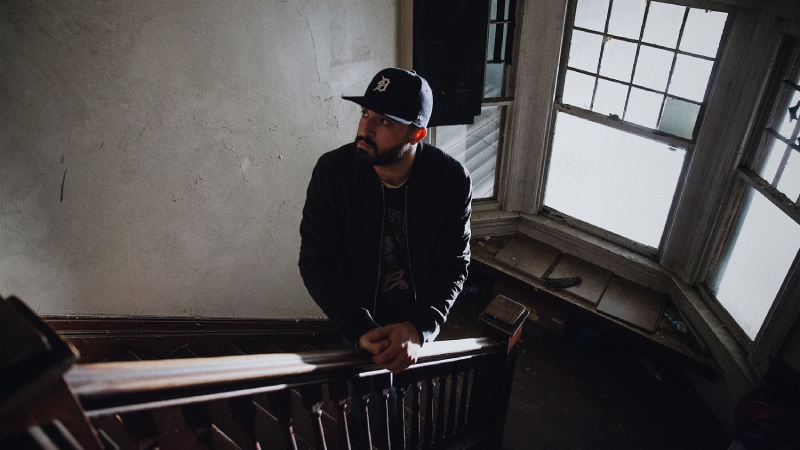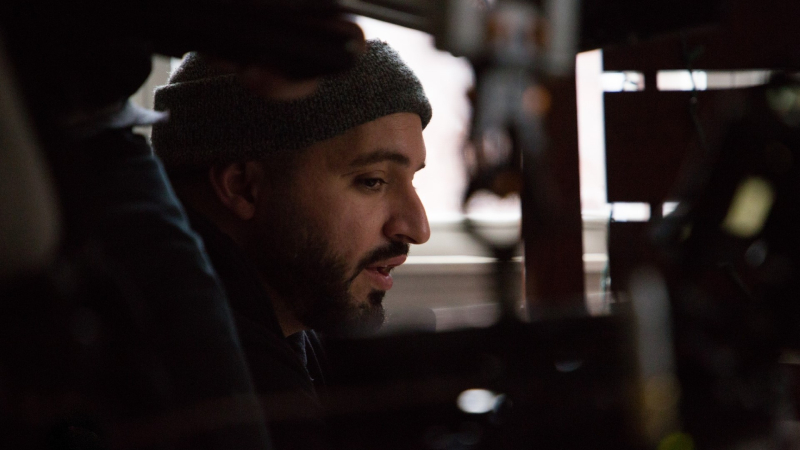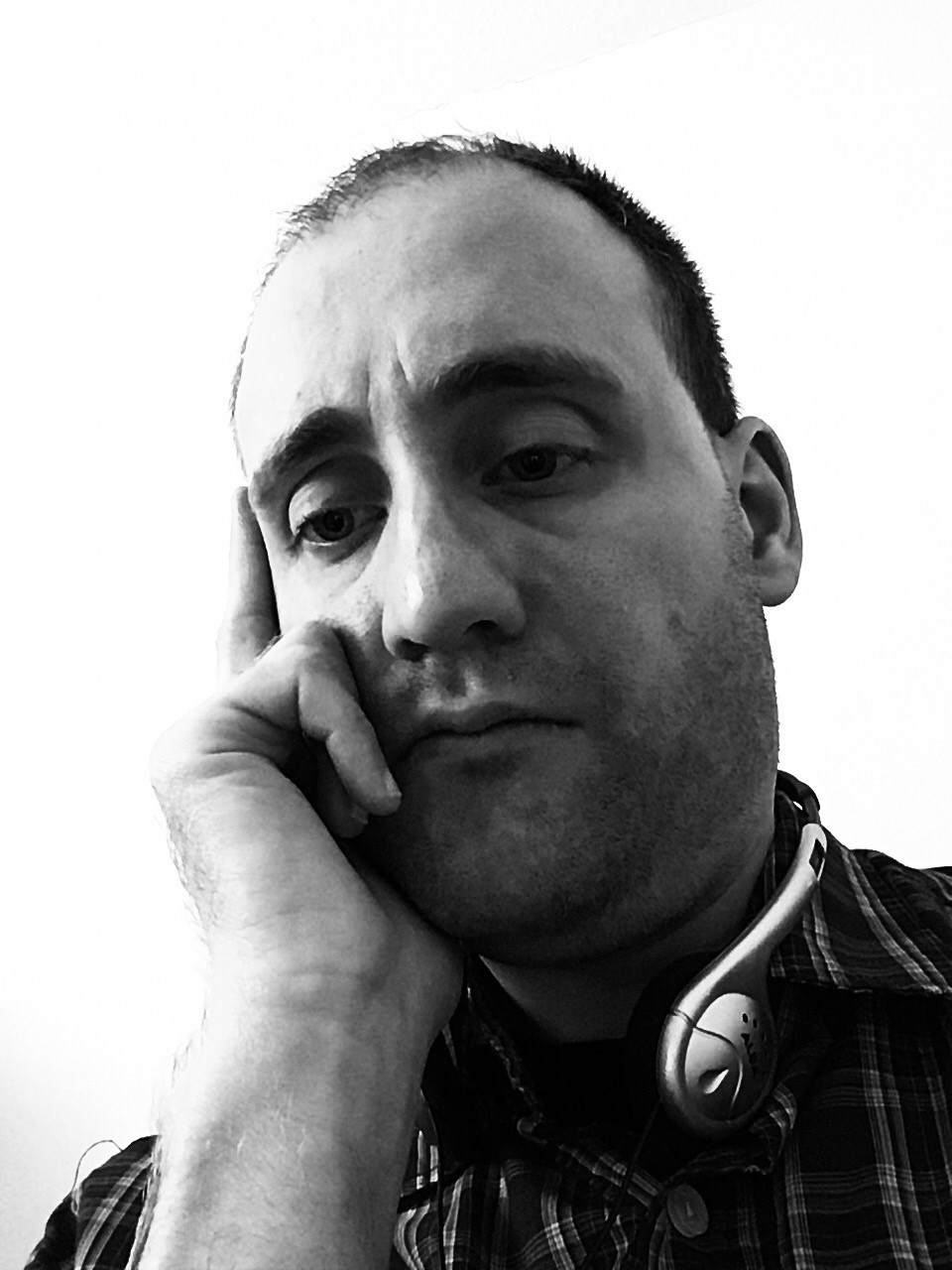




Hamoody Jaafar is a first-generation Arab and Muslim-American that raised in Detroit. His directorial debut Rouge premieres this year at various festivals, including Cleveland and Freed.
Rouge documents the story of the River Rouge High School Panthers. They won a record 12 state championships between 1954 and 1972, under their legendary coach Lofton Greene. Now, former Panther player LaMonta Stone, returns to the once thriving industrial town of River Rouge, Michigan, seeking the school’s fifteenth state championship as its head coach. Rouge is as much about the personal journeys of its subjects, among them Seniors Brent Darby Jr. and Ahmoni Weston, and junior Legend Geeter, as it is about basketball and the dreams of its players who look ahead to their collegial future.
He talks to Paul Risker about this filmmaking experience, and how it ties together with his personal life and indeed with those portrayed in the movie.
…
.
Paul Risker – You’ve said that you feel privileged to be the one to tell this story. What compelled you to believe in this film and decide to tell this story at this particular point in time?
Hamoody Jaafar – A part of this larger and incredible story is tied to my childhood. I say I feel privileged because luckily and unknowingly to me, the part I was familiar with was only a fraction of what had transpired there. Growing up in the mid to late ’90s, I looked up to Brent Darby Sr. As Rouge’s best player, it was inspiring to watch someone local go on to play Big Ten basketball on national TV. When he passed in 2011, it was tragic and it felt like the door of River Rouge basketball that I had loved and known was officially closed. Brent passed in December of 2011 and in December of 2019 I unexpectedly came across River Rouge basketball again. I felt privileged again because I had gone out to film a “shiny object” in high school basketball prospect Emoni Bates (who was River Rouge’s opponent back in December 2019 and is now in the NBA) instead I needed up in his opponents locker room unexpectedly which was River Rouge High school that night. Connecting the dots and realising that the late Brent Darby Sr had a son that was back at his father’s Alma mater playing for his late fathers coach. That serendipity was too special to ignore. Then after falling down a rabbit hole of research I discovered a history before me that was quite frankly forgotten about and somewhat undiscovered. I had no choice but to tell this story not only because what was unfolding and transpiring felt like a “movie” but more importantly because it gave way to tell a historical story that was well overdue and couldn’t have been more perfectly timed and connected with former student athlete and Coach LaMonta Stone being back. His presence gave way to a unique doorway which allowed for us to connect all of Rouges eras.
PR – Rouge is your debut feature. How did the expectations compare to the realities of the experience?
HJ – The expectations were very high at first. The excitement of the discovery and realisation combined with the backing and belief of local collaborators who believed in the vision and story felt like we were on an upward trajectory of excitement and success. I had spent more than 10 years building a reputation and showcasing a skillset that could help further my larger storytelling endeavours. We had a production crew dialled in to bring this to life and sort of “figure it out” after capturing what we needed to. Then the Covid pandemic hit. Which completely derailed our approach and intention of documenting the 2020 state tournament in pursuit of the programme’s 15th state championship. After much introspective thought, we began documenting real life events at an attempt to give closure to our protagonists journeys. As time passed, there was certainly a point where we had no money, little belief from external interest, and 500+ hours of footage collecting dust on a few hard drives. In the summer/fall of 2022, we received a new lease on life with the project as we were awarded a grant from the Ford Foundation that gave us a real runway to finish the film in post production. The up and down nature of it certainly took its toll but I do believe that as time passed it only strengthened some of the deeper lessons of our story which is that the Rouge experience is deeper than basketball.

PR – When you first began shooting, did you have any specific intentions for the real-life story Rouge would document?
HJ – Yes to an extent. I come from the downriver area and I’m familiar with dyer environmental and economic conditions that communities of colour face across the US in particular in southeast Michigan. When we leaned into our stakeholders stories, we knew we wanted to document some of those harsh realities. Both from an interview perspective as well as a visual one. We felt and knew those realities were important to contextualize what the realities of the real world stories now presented and were adamant about capturing them.
PR – How tumultuous was the experience of editing the film, and did you have to leave anything on the cutting room floor you wish you could have included? Is filmmaking always about compromise and sacrifice
HJ – Undoubtedly the most challenging part of the entire process. From a time, logistical, and creative perspective. We had over 500+ hours of footage and several subplots and historical accomplishments to consider. One of our editors Chent had been working remotely with me on sheer belief since December of 2019. We ended up with 2 editors (along with Ben Garchar) who essentially tag teamed the edit after finally receiving the ford foundation grant in late 2022. We left several stories on the cutting room floor (subplots from the historical “Lofton Greene years”, a deeper dive into the history from post Lofton Greene into the stone years of the 1990s, historical accomplishments of River Rouge the place & city, dyer economic realities of the 2000s that led to the school district almost being shutdown, etc). There is certainly a level of compromise and sacrifice not only during the production process but of course in post production as well.
PR – Do you think that Rouge will resonate with audiences outside the United States?
HJ – I believe wholeheartedly that it well. There are so many universal human themes that are very relatable. Basketball is of course an internationally loved game that can transcend racial and economic boundaries. My belief is that anywhere around the world people can relate to the themes of this story including community, fatherhood, mentorship, competition, harsh economic conditions, global pandemic, being a student or student athlete, racial integration, etc.
PR – Rouge touches on the broad themes of race and the segregated United States, what drives us as people, memory and the relationship with the past. Can you discuss your process for attentively constructing layers of a story, identifying chapters in the story of the basketball programme, and drawing out themes and ideas that contribute to this broader conversation?
HJ – Yes. I’m a minority myself. As a first generation Arab and Muslim American I’ve had my fair share of alienation and identity struggles. Basketball to me as a young person helped me gain acceptance, friendships, discipline, etc. it even helped me shape my identity. I knew that what River Rouge had accomplished in the ’50s and ’60s was widely undiscovered and unheard of. I also knew that it was historically unique and ahead of its time. (Comparatively speaking). The former head coach, Lofton Greene and his River Rouge teams had obvious anecdotes when we had newspaper headlines that read “I don’t care what colour my players are”. During a time where the country was widely divided. This to me needed to be celebrated. And knowing that coach LaMonta Stone, who played his senior season during Coach Lofton Greene’s final year coaching at River Rouge also felt like an obvious way to connect the eras historically. Then with Coach Stone having coached the late Brent Darby Sr, and having returned to River Rouge to coach again but this time with Brent Darby Jr, it was clear to me that there was a contemporary noteworthy story unfolding in front of our eyes. The goal then was to give audiences an intimate experience into being a River Rouge Panther themselves, and following a few of the student athletes and their current journeys while simultaneously finding relevant doorways into the past to help gravitate and contextualize the stakes of the present along the way.
PR – Watching Rouge, I found myself thinking about how the past never fades into obscurity as long as it’s alive in the memory. What Stone and his players, among them Darby Jr., Weston, and Geeter are trying to do is to keep the past alive and create new memories so that the River Rouge legacy lasts for future generations. Your thoughts on this reading of the film?
HJ – You nailed it. The past never fades as long as it’s alive in memory is right. My parents are both the youngest of seven children. They are senior citizens now. Most of my parents siblings have passed away and all I’ve held onto as I grow older are old photos and vhs tapes. My grandmother raised me and she passed 25 years ago but is still fresh in my memory. Largely due to my own insistence of having her memories fresh. I think River Rouge in present day is a different version of the pasts historical legacy. Though River Rouge has always been a lower to middle class community, it is certainly now predominantly low income and faces some of the harshest economic conditions in the state of Michigan. I agree that Stone and his players are working to keep that history and legacy alive, no question. But this version of the programme to me is even deeper in humanity and meaning that is was before. Ahmoni Weston in particular used the program as a bridge to help him get into his next stage of life. It’s a lifesaver now more so in my opinion than maybe it used to be since it’s become a beacon of light for surrounding communities that have lost their neighbourhood schools.

PR – Rouge is like a dance between the on-court action and off-court conversations, where you develop the personalities of your subjects. Could you discuss your approach to creating this back-and-forth rhythm?
HJ – The specificity of Ahmoni’s game is highlighting him as a floor general and leader on the court. We use his real life backstory to gravitate him being there and how much this experience means to him but also highlight his charismatic nature off the court with his teammates and parents so we can root for and feel how likable he is. With Brent Darby Jr, the backstory is obvious, the basketball stakes are high, and his existence is enough to root for. However there’s a ton of pressure when your father’s name is literally on the court. A lot of what we captured didn’t necessarily intend on showing what he internalized but his body language and facial expressions showed that. It was honest and vulnerable. The culmination of that internal emotion may have came out in frustration during the latter part of the season in that Southfield Christian game. With Legend, the basketball stakes are the highest, his physical presence on the court is captured in slow motion with aggressive rebounds and dunks over his peers but we attempted to draw a fine line between the basketball highlights and the real life moments so they meshed together in harmony and felt more specific than random.
PR – In the on-court action, you forget you’re watching a documentary and start feeling like you’re watching a live sporting event. Was this carefully orchestrated and how do you respond to hearing about this reaction to the film?
HJ – Yes. The on-court action we wanted to capture more uniquely than maybe most basketball films. Mainly because the style of play River Rouge plays and has always played is very selfless, team-oriented, disciplined, and has great defence. Though the game of basketball has evolved and the intricacies of the game have shifted, the core fundamentals are very there and present. We wanted to capture game play in a way that felt ultra cinematic. Slow motion felt right at times because basketball can feel like the ballet when executed the right way. We also wanted to capture it intimately so the audience felt like they were a part of the team but also have a point of view that felt like a sporting event. We used multiple cameras to achieve this. We felt they deserved that type of cinematic treatment as it helped complement the many levels of the team and story overall. It also gave us several options in the edit as we developed a wider technique to capture moments unfolding from multiple angles.
PR – How do you look back on the experience of making Rouge? Is filmmaking transformative, and where/how do you change as a person?
HJ – It was a labour of love but also a life-changing experience. I look back and think of when we started. Since then, I’ve gotten married, have a one-year-old baby girl (with another on the way), and have watched these young men grow up in front of our eyes. Filmmaking is certainly transformative. For me, it challenged me in ways I didn’t know was possible. It tested me mentally and emotionally on levels that I’m not even sure are healthy quite honestly. I told Coach Stone that if it ended up killing me to get this film completed, then so be it. That’s how passionate and adamant I was about completing it. And that quite frankly was literally the level of extent I would have gone to see it through. I’ve grown and matured in ways that are priceless. I wouldn’t have changed a single part of the experience. I believe every element of it happened for a reason.
…
.
Hamoody is pictured on both images.
















